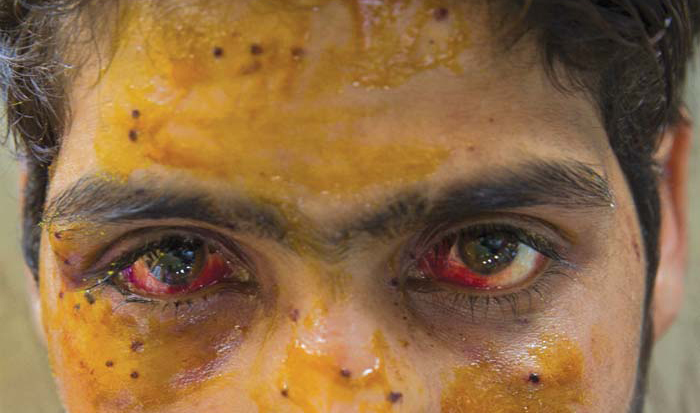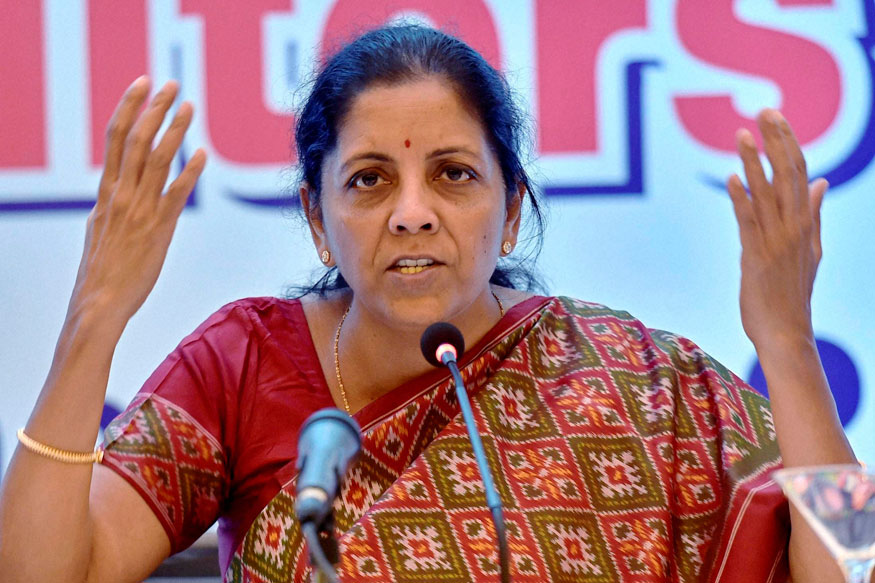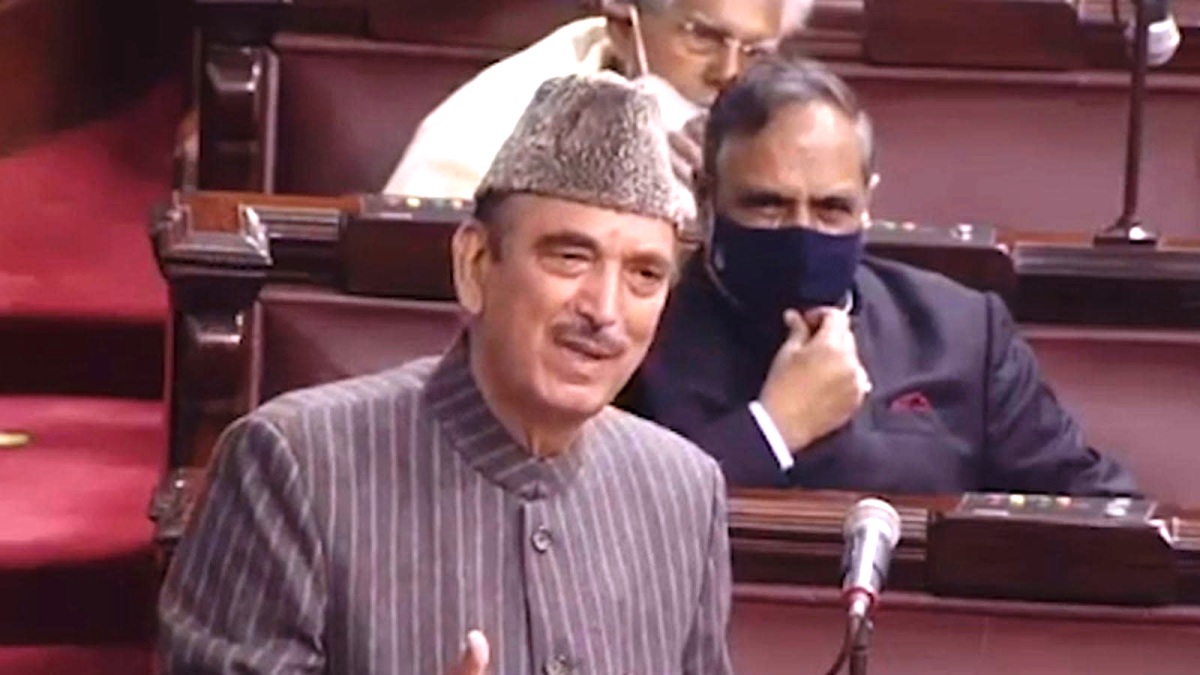Gaurav Vivek
NEW DELHI

Despite the fact that pellet guns are routinely used to control crowds in Kashmir, it has come to light that pellet guns are not on the list of ten non-lethal weapons suggested by the Bureau of Police Research and Development in its standard operating procedure for tackling violence.
The use of pump action shotguns with pellets as ammunition was first allowed in Kashmir in 2010, after 120 people were killed in mass civil.
The issue has been highlighted again in the wake of mass uprising in the Valley following the killing of popular Hizbul Mujahideen commander Burhan Wani on July 8 and clashes between protestors and the forces.
In the wake of the incidents of 2010, the Union Ministry of Home Affairs (MHA) had constituted a task force under the chairmanship of the then home secretary to recommend standard operating procedures (SOP) for dealing with public agitations through non-lethal measures.
The director general of the Bureau of Police Research and Development (BPR&D) was the member secretary of this task force. The SOPs were finalised and compiled in the form of a booklet which was circulated by the MHA to various police authorities.

BPR&D Report
A Delhi-based RTI and human rights activist, Venkatesh Nayak, accessed the information on this “restricted” document.
He said that one of his contacts had filed the RTI application to know about the new SOPs issued by the MHA in 2011, after the use of pellet guns began causing grievous eye injuries to protesters in Kashmir.
However, as the reply was not satisfactory, Nayak filed an application with the Delhi police, which provided him detailed information on the subject, including the report of the BPR&D, which had worked with a task force to identify non-lethal measures for crowd control.
Nayak said two members of this task force were from Jammu and Kashmir. The director general of the Central Reserve Police Force (CRPF) was also a member.
What the RTI activist found surprising was that though the CRPF had begun using shotguns with pellets in Kashmir, the BPR&D committee had not even examined their efficacy as a measure of crowd control.
“At least it was not listed in the report of the BPR&D and the SOPs issued based on it. So how and when CRPF was authorised to use such ‘less lethal measures’ is something we need to be asking,” he said.
The use of pellet guns in the Valley has been on a constant increase. In the first year of their use in the Valley, the use of these guns on stone-pelting youth had resulted in 45 people losing their vision.
Subsequently, in the wake of protests after the hanging of Afzal Guru, at least 12 youth sustained pellet injuries in their eyes.

This year, the damage has been more severe as pellet guns have become the weapon of choice for the forces to curb stone attacks, which began after Wani died.
In the past month, there have been over 1,000 incidents of violence in the Kashmir, in which over 3,300 forces personnel and over 6,000 citizens, mostly young protesters, have been injured.
The forces action has also led to the death of at least 57 people, again mostly young protesters, and two Jammu and Kashmir state police personnel.
The state’s response to protests has primarily been use of tear gas – with over 5,000 shells being fired so far – or through the use of pellet guns. As a consequence, over 200 civilians have suffered eye injuries this year.

Pellet Guns As Weapons
The culture of pellet gun use has come under scathing criticism from both within and outside India.
Following the death of a third youth due to pellet gun injuries earlier this month, Amnesty International had also urged the government of India to stop using the guns for “crowd control”.
The Union Government, meanwhile, has already assured people that it will examine the issue.
Union home minister Rajnath Singh had stated a fortnight after uprising was triggered in Kashmir that he had ordered the constitution of a panel to examine the issue.
However, the CRPF has been maintaining that the pellet guns remain the “most efficient weapon” for handling the “kind of protests” being seen in Kashmir.
Although it has ten mandated non-lethal weapons for use in different situations, including plastic pellet guns, rubber bullets, stun grenades, multi-button shells, blank rounds, pepper balls and capsicum grenades, and has used them on different occasions, CRPF officials have maintained that pellet guns were most effective in maintaining “a wall between injury and certain death for protesters”.

A Conspicuous Absence
However, a look at the BPR&D classification of non-lethal weapons reveals that the nodal agency for all research in police issues had never approved the use of pellet guns as weapons.
The BPR&D document on ‘Standard Operating Procedures to deal with public agitations with non-lethal measures’ had dealt with the issue in detail.
It called for “upgrading of training of policemen regarding riot control”, stating among other things that “sufficient anti-riot equipment with emphasis on non-lethal equipment need to be made available to the police so that they could tackle law and order situations through non-lethal methods to the extent possible”.
On the issue of equipment, the document had stated that in a contingent of police with 20 heads, there should be 2-3 persons with non-lethal weapons and two persons with firearms.
In the chapter on SOPs, the document stated that “force is to be used by first using non-lethal means followed by harsher ways, if required till the situation is brought under control”.
Discussing the “procedure” on use of force, the document said that non-lethal weapons should be used to avoid loss of human life. “Aim should be taken at the lower limbs of protesters to avoid causing injuries to vital parts.” However, as has been noticed in Kashmir this year, the spray of pellets usually results in injuries to all parts of the body.

The third part of the document pertaining to the SOP for special situations dealt with the issue of “stone pelting mobs” – as are being seen in Kashmir at present. It clearly stated that “if use of tear smoke is not effective, other non-lethal and less lethal means should be used exercising caution and discretion”. The document also said that “as far as practicable confrontation with the stone pelters in narrow streets should be avoided”.
As for women and children, the document said they should be generally persuaded to disperse but if persuasion fails water cannons and tear smoke can be used, and if required, stun grenades can also be used.
The report of sub-group 2 had referred to the various kinds of equipment that could be used by the police forces. This included water cannons, regular tear gas shells, stingers and dye-marker grenades, plastic bullets for mob dispersal, various forms of tasers, pepper-ball launchers, long range acoustic devices, laser dazzlers, net guns and stink bombs.
The document also laid down the situations in which each of these weapons should or should not be used. The DRDO had in the document dealt with the pros and cons of each of these weapons as instruments of crowd control in great detail, but there was no mention on use of pellet guns.
(The detailed story on pellet gun appeared in The Wire.in and is being reproduced here with minor changes.)















